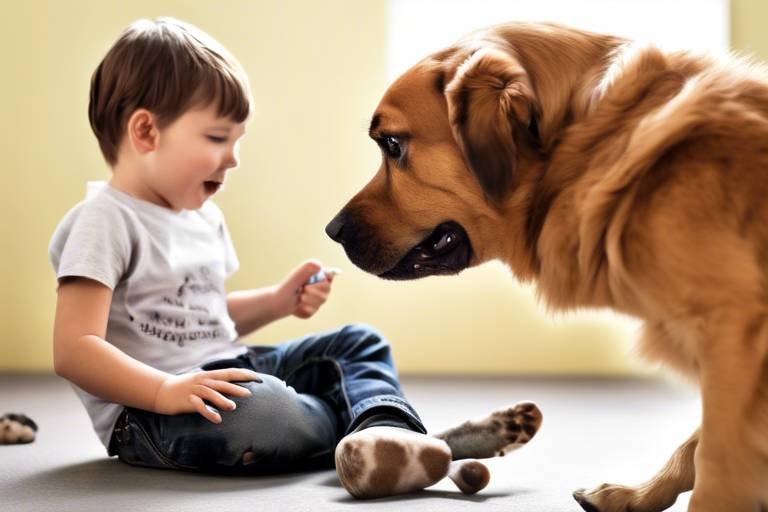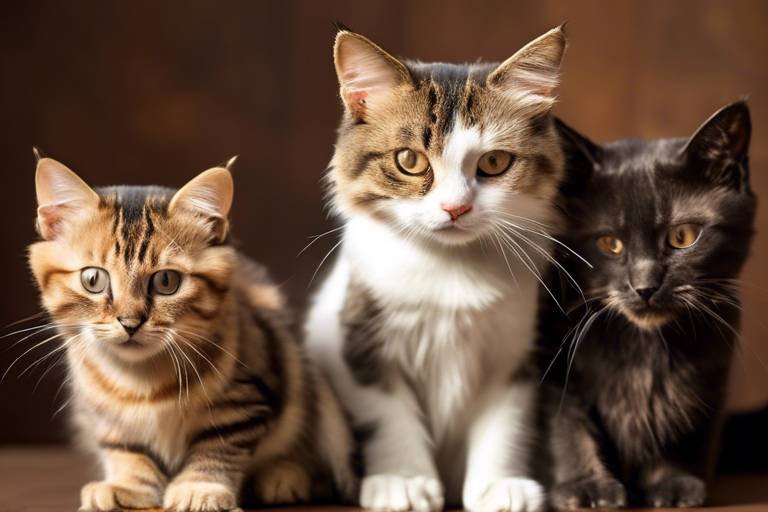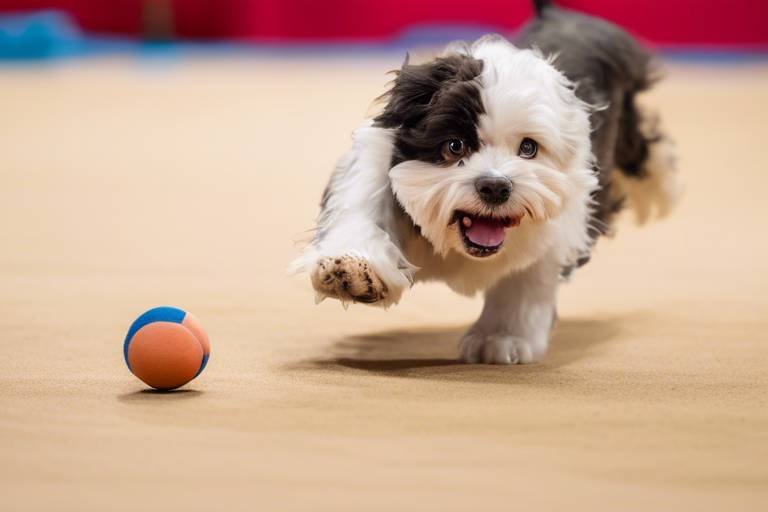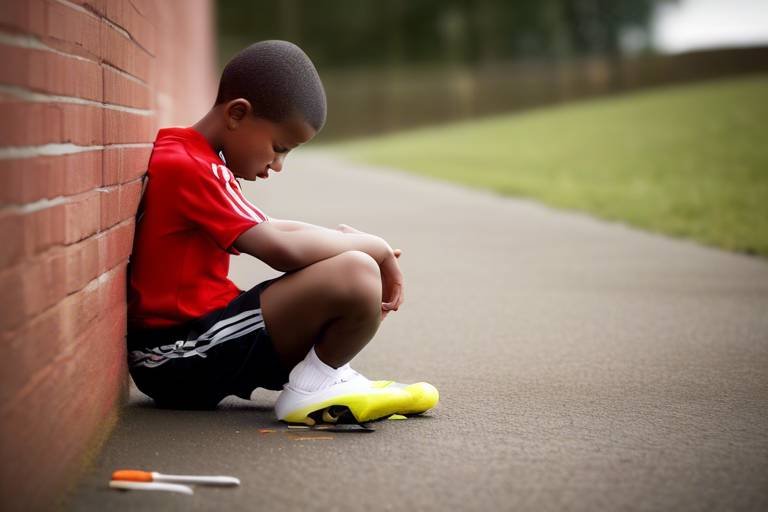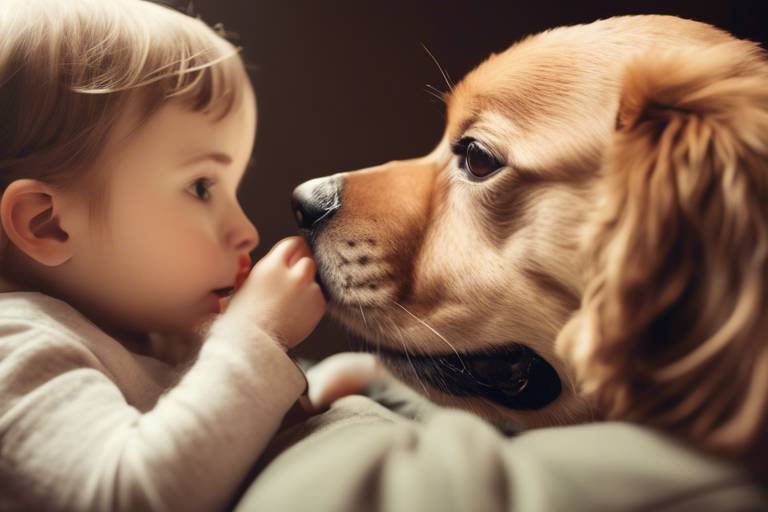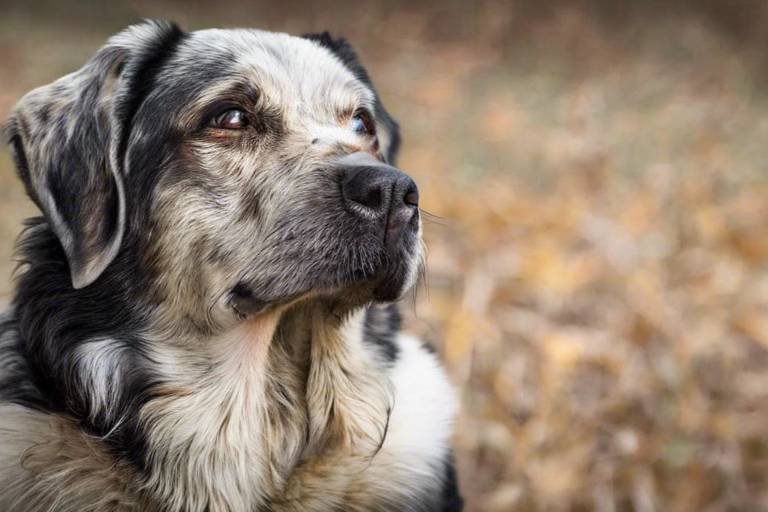The Role of Social Learning in Pet Behavior
Have you ever noticed how your furry friend seems to pick up tricks just by watching you or another pet? This phenomenon is known as social learning, and it plays a pivotal role in shaping the behaviors of our beloved pets. Social learning is not just a fascinating aspect of animal behavior; it’s a powerful tool that can enhance our understanding of how pets interact with their environment and each other. By delving into the mechanisms behind social learning, we can unlock new strategies for training and improving the lives of our pets.
At its core, social learning refers to the process by which animals, including our pets, observe and imitate the actions of others. This could be another animal or even a human. Imagine a puppy watching its mother expertly navigate a set of stairs or a kitten learning to hunt by watching its older sibling. These moments are not just cute; they are critical learning experiences that shape their behavior and skills. The implications of social learning extend beyond mere imitation; they influence how pets communicate, interact, and adapt to their surroundings.
Understanding social learning is essential for pet owners and trainers alike. It allows us to recognize that our pets are not just passive recipients of training commands but active learners who absorb information from their environment. This knowledge can transform our approach to training, making it more effective and enjoyable for both pets and their humans. So, let’s dive deeper into the fascinating world of social learning and explore its various types, mechanisms, and impacts on our pets’ behavior.
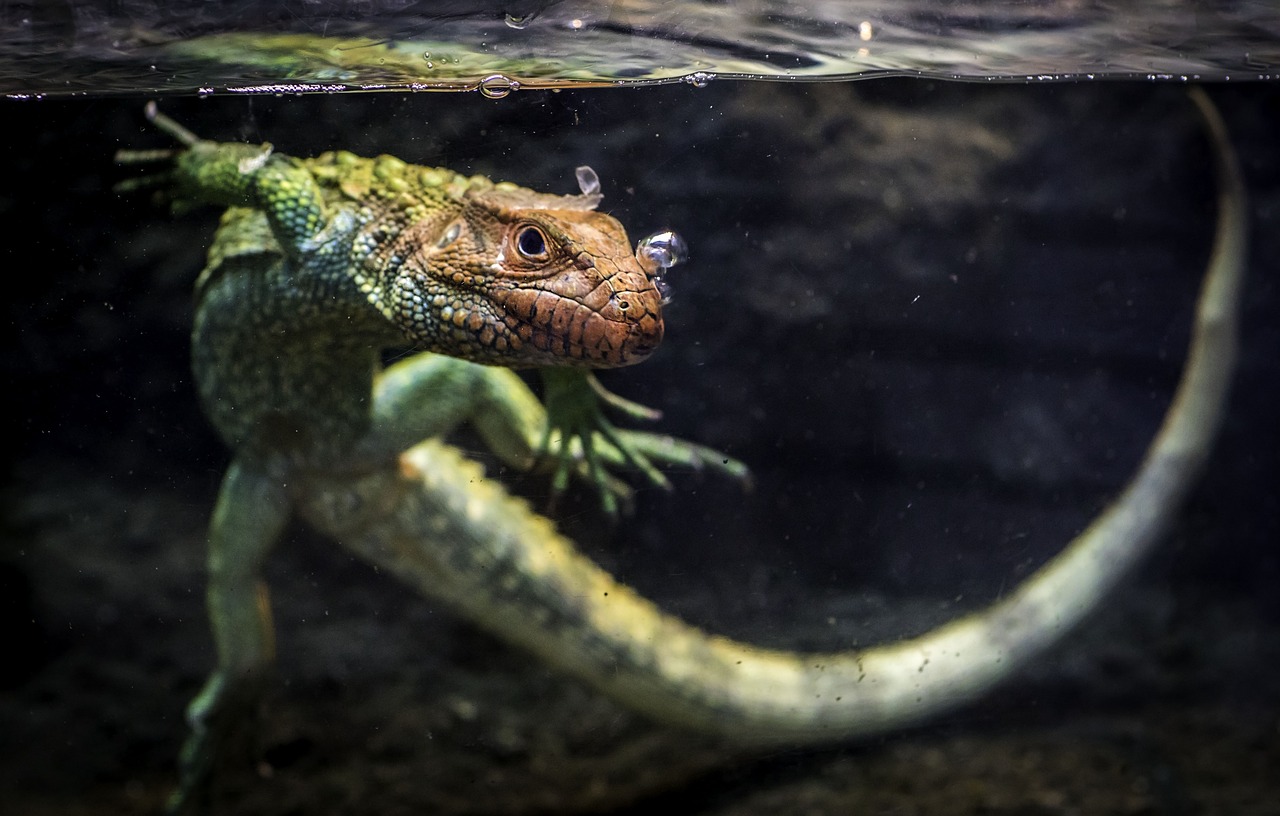
Understanding Social Learning
Social learning is a fascinating concept that goes beyond the individual experiences of animals, including our beloved pets. It refers to the process through which animals observe and imitate the behaviors of others, often leading to the acquisition of new skills and knowledge without direct experience. Imagine a puppy watching its older sibling fetch a ball; through observation, it learns not just the action of retrieving but also the excitement and joy associated with play. This dynamic process is crucial for understanding how pets interact with their environment and each other.
The significance of social learning in pet behavior cannot be overstated. It plays a vital role in shaping how pets adapt to their surroundings, respond to training, and develop social bonds. For instance, when a cat sees another cat using a scratching post, it may be more inclined to try it out itself, thereby learning a behavior that is beneficial for both its physical health and the furniture! This ability to learn from others is not just a survival tactic; it fosters a deeper connection between pets and their human companions.
Moreover, social learning can be categorized into several types, each contributing uniquely to how pets behave. Here are some key aspects of social learning:
- Observational Learning: This occurs when pets learn by watching others perform a task or behavior.
- Imitation: Involves replicating specific actions seen in others, often leading to the development of new skills.
- Social Facilitation: This is when the presence of another animal enhances a pet's performance, encouraging them to engage in certain behaviors.
Understanding these mechanisms is essential for pet owners and trainers alike. By recognizing how pets learn socially, we can create more effective training methods that leverage these natural tendencies. For example, if a dog observes another dog responding positively to a command, it may be more likely to follow suit, enhancing the training experience for both pets and their owners.
In summary, social learning is a powerful tool in the world of pet behavior. It not only influences how pets learn and adapt but also enriches the relationship we have with them. By tapping into this innate ability, we can foster better communication, understanding, and cooperation with our furry friends.

Types of Social Learning
When it comes to understanding how our beloved pets learn, social learning plays a pivotal role. This fascinating concept isn't just about picking up tricks; it's about the ways animals, including our furry friends, observe and mimic the behaviors of others. In the realm of social learning, we can categorize the processes into several key types, each revealing a unique aspect of how pets adapt and thrive in their environments. Let's dive into these categories and see how they manifest in our everyday interactions with pets.
One of the primary forms of social learning is observational learning. This occurs when pets witness the actions of others—be it fellow animals or humans—and learn from those observations. Imagine a dog watching its owner perform a trick, like rolling over. The dog may not understand the mechanics of the action at first, but through repeated observations, it begins to grasp the concept. This type of learning highlights the importance of role models in a pet's life. If a dog sees another dog receiving praise for a particular behavior, it's likely to try that behavior itself in hopes of receiving similar rewards.
Another fascinating aspect is imitation. Unlike observational learning, which may involve a more passive absorption of information, imitation is about actively replicating specific actions. For instance, if a cat watches its human open a door by pawing at the handle, it may attempt to do the same. This direct replication shows a level of cognitive engagement that is quite impressive in the animal kingdom. Imitation not only helps pets learn new skills but also strengthens the bond between them and their human companions, as they engage in shared activities.
We also have social facilitation, which occurs when the presence of another animal enhances a pet's performance. This is particularly evident in group settings, where the excitement or energy of one animal can spur others to act. For example, if one dog starts to bark excitedly at a squirrel, it often triggers a chain reaction, causing other dogs to join in. This communal behavior not only fosters social bonds among pets but also amplifies their instinctual reactions to stimuli in their environment.
To summarize, the types of social learning—observational learning, imitation, and social facilitation—are integral to how pets acquire new behaviors and skills. Each type offers a glimpse into the intricate ways animals interact with each other and their humans. Understanding these mechanisms can significantly enhance our approach to training and bonding with our pets, making the experience more rewarding for both parties. So next time you see your pet learning something new, remember that they are not just instinctively reacting; they are engaging in a complex process of social learning!
Observational Learning
Observational learning is a fascinating phenomenon that occurs when pets learn by simply watching others. This type of learning is not just limited to humans; it's a vital part of how animals, including our beloved pets, adapt and thrive in their environments. Imagine a puppy watching its older sibling effortlessly fetch a ball. The younger pup might not know how to do it yet, but through observation, it starts to understand the mechanics of the game. This process showcases how pets can acquire new skills and behaviors simply by observing their companions or humans, which is an incredible testament to their intelligence and adaptability.
One of the most striking examples of observational learning in pets is seen in dogs. These social animals are known for their ability to learn tasks by watching their owners or other dogs. For instance, if a dog sees its owner putting on a leash and getting excited about going for a walk, it will likely start to associate the sight of the leash with the fun of outdoor adventures. This connection can lead to the dog eagerly waiting by the door whenever it sees the leash, demonstrating how observational learning shapes their behavior.
Cats, on the other hand, exhibit observational learning in their unique, often quirky ways. For example, a cat may observe its human opening a cabinet to retrieve a treat. Over time, the cat may learn to mimic this behavior, pawing at the cabinet door when it wants a snack. This behavior not only illustrates their ability to learn through observation but also highlights their cleverness in figuring out how to get what they want.
To further understand the implications of observational learning, consider the following table illustrating some key aspects of how pets engage in this form of learning:
| Aspect | Description |
|---|---|
| Definition | The process of learning behaviors by watching others. |
| Examples in Dogs | Learning to fetch, sit, or follow commands by observing other dogs or humans. |
| Examples in Cats | Opening cabinets, using litter boxes, or interacting with toys by watching their owners. |
| Benefits | Enhances learning efficiency, promotes social bonding, and encourages adaptive behavior. |
In conclusion, observational learning is a powerful tool that pets use to navigate their world. By watching and mimicking the actions of others, they not only learn practical skills but also develop social bonds and adaptive behaviors. This learning process is essential for both training and understanding our pets, as it provides insight into their thought processes and interactions. So next time you see your pet observing you or another animal, remember that they might just be picking up some valuable lessons!
Imitation in Pets
Imitation is a fascinating aspect of pet behavior that reveals just how perceptive our furry friends can be. When we think about imitation, we often picture a child copying an adult, but pets do it too! In fact, pets like dogs and cats are incredibly adept at picking up on cues from their environment and mimicking the actions of others. This ability not only showcases their intelligence but also plays a significant role in their training and social interactions.
For instance, consider a dog watching its owner perform a trick, such as rolling over. The dog may not initially know how to do it, but after observing the owner a few times, it might attempt to replicate the action. This can lead to a delightful moment where the dog successfully rolls over, much to the delight of its human. This is a classic example of imitation in pets, where they learn through observation rather than through direct instruction. It’s akin to a child learning to ride a bike by watching their older sibling – they see the action and naturally want to try it themselves.
Moreover, imitation can be particularly beneficial in multi-pet households. For example, if one dog learns to fetch a ball, another dog may quickly pick up the same skill just by watching. This phenomenon can accelerate the learning process and create a more cohesive environment where pets encourage each other. It’s a bit like a team sport; when one player shines, the others often step up their game as well.
Interestingly, imitation isn't limited to just actions; it can also encompass emotional responses. Pets often mirror the behaviors and emotions of their human companions. If a dog sees its owner reacting excitedly to a new toy, the dog is likely to display the same enthusiasm. This emotional imitation fosters a deeper bond between pets and their humans, making the relationship even more rewarding.
In terms of training, understanding the mechanics of imitation can be a game-changer. Trainers can leverage this by demonstrating desired behaviors, allowing pets to observe and then encouraging them to imitate those actions. This method can be particularly effective for complex commands or tricks. By creating an environment where pets can learn through imitation, trainers set the stage for quicker and more engaging learning experiences.
To summarize, imitation in pets is a powerful tool that illustrates their ability to learn from their surroundings. It enhances their training, strengthens bonds, and fosters a dynamic social environment among pets. So, the next time you see your pet mimicking your actions, remember that they are not just being cute; they are actively engaging in a learning process that is as natural to them as it is to us.
Social Facilitation
Social facilitation is a fascinating phenomenon that occurs when the presence of another animal enhances a pet's performance or behavior. Imagine a dog at the park, surrounded by its furry friends. Suddenly, it becomes more playful, chasing after a ball with renewed vigor, simply because its buddies are doing the same. This is social facilitation in action! It’s like being in a crowd at a concert; the energy of those around you can elevate your own enthusiasm and engagement.
This concept is not limited to just dogs. In fact, social facilitation can be observed across various species, including cats, birds, and even some reptiles. The dynamics of social interaction can significantly influence how pets behave in different situations. For instance, when a cat witnesses another cat successfully navigating an obstacle, it may feel more confident to try the same task. This kind of behavior showcases how social learning and facilitation intertwine, creating a supportive environment for learning and growth.
To better understand social facilitation, let’s consider a few examples:
- Group Training Sessions: When pets are trained in groups, they often perform better than when training alone. The presence of other animals can motivate them to engage more actively and respond positively to commands.
- Play Behavior: Pets often exhibit heightened playfulness when they see others engaging in play. This can lead to more vigorous and enthusiastic interactions, enhancing their social skills and physical fitness.
- Fear Reduction: In situations where pets may feel anxious, such as during thunderstorms or fireworks, having another calm pet nearby can help alleviate their fears. The calmer animal serves as a role model, encouraging the anxious pet to relax.
Understanding social facilitation is crucial for pet owners and trainers alike. By recognizing that pets thrive in social settings, we can create environments that promote positive behaviors and learning experiences. For example, incorporating playdates or group training sessions can harness the power of social facilitation, leading to more effective training outcomes.
In summary, social facilitation highlights the importance of social dynamics in shaping pet behavior. Whether it's through enhanced performance during training or increased confidence in new situations, the presence of other animals plays a pivotal role in how our pets learn and interact. So, the next time you see your pet thriving in the company of others, remember that they are not just playing; they are learning and growing through the power of social facilitation!
Impacts on Training
Understanding social learning is crucial for effective pet training. When we think about training our furry friends, it’s easy to focus solely on commands, treats, and repetition. However, the truth is that pets are not just blank slates waiting to be filled with our instructions; they are keen observers of their environment. This means they are constantly learning, not just from us, but also from each other. Imagine a classroom where students learn not just from the teacher but also from their peers. That’s exactly how our pets operate in their social circles!
By leveraging social learning principles, trainers can enhance the learning outcomes for pets in remarkable ways. For instance, if a dog sees another dog performing a trick and receiving praise, it may be more motivated to try that trick itself. This is where the magic of observational learning comes into play. Trainers can create an environment that encourages this kind of learning by using multiple dogs during training sessions. When one dog successfully performs a task, the others are likely to follow suit, creating a ripple effect of learning.
Moreover, the presence of other animals can significantly influence a pet's performance, a phenomenon known as social facilitation. For example, a timid dog might hesitate to jump over a hurdle when alone but will gain confidence and jump when it sees its more adventurous buddy doing the same. This highlights the importance of group training sessions, where pets can learn from each other’s successes and failures. Trainers can set up scenarios that mimic real-life situations where pets can observe and imitate the desired behaviors.
Additionally, trainers should consider the individual personality of each pet. Some pets might thrive in a group setting, while others may require more one-on-one attention. Tailoring training methods to suit the learning style of each animal can lead to more effective outcomes. For instance, shy or anxious pets might benefit from a quieter environment where they can observe without feeling overwhelmed. On the other hand, more social pets could flourish in a bustling group setting where they can engage and learn from their peers.
Incorporating social learning into training not only makes the process more enjoyable for pets but also strengthens the bond between them and their human companions. When pets learn through observation and interaction, they develop a deeper understanding of their environment and the behaviors expected of them. It’s like teaching a child through play rather than just textbooks—learning becomes a fun and engaging experience!
In conclusion, recognizing the role of social learning in pet behavior provides trainers with a powerful tool to improve training effectiveness. By creating opportunities for pets to observe and interact with each other, trainers can foster an environment that not only enhances learning but also enriches the lives of pets. After all, a well-trained pet is not just about obedience; it’s about understanding, communication, and a shared journey of discovery.

Case Studies in Social Learning
When it comes to understanding social learning in pets, real-world examples offer a fascinating glimpse into how our furry companions adapt and thrive in their environments. These case studies not only highlight the mechanisms of social learning but also emphasize its profound impact on pet behavior. One notable study involved a group of dogs observing their owners performing a specific task, such as opening a container to retrieve a treat. The results were astounding: dogs that had merely watched their owners were able to replicate the action with surprising accuracy. This phenomenon illustrates the power of observation and the innate ability of dogs to learn from human behavior, showcasing their unique bond with us.
Another compelling case study focused on a group of cats and their interactions with each other. Researchers observed how kittens learned to navigate obstacles by watching older cats. The kittens, initially hesitant, grew more confident as they saw their older counterparts successfully maneuvering through challenges. This imitation of behavior is a testament to the adaptability of cats, demonstrating that even the most independent of pets can benefit from social learning. The implications are clear: understanding these dynamics can significantly enhance how we train and interact with our pets.
Moreover, the concept of social facilitation plays a crucial role in these studies. In one experiment, a group of dogs was tested in a park setting where their peers were present. The dogs exhibited heightened performance levels when surrounded by their friends, showcasing how social dynamics can elevate their capabilities. This kind of behavior is not just limited to dogs; it can also be observed in various animal species. For example, elephants have been known to learn new foraging techniques by watching others in their herd, which further underscores the importance of social learning across species.
To summarize the findings from these case studies, here’s a quick overview:
| Study Subject | Type of Social Learning | Key Findings |
|---|---|---|
| Dogs | Observational Learning | Learned to open containers by watching owners. |
| Cats | Imitation | Kittens learned to navigate obstacles by observing older cats. |
| Dogs in Groups | Social Facilitation | Improved performance when in the presence of peers. |
| Elephants | Observational Learning | Learned foraging techniques by watching others in the herd. |
These case studies not only illuminate the fascinating world of social learning but also provide practical insights for pet owners and trainers alike. By recognizing the significance of observational learning, imitation, and social facilitation, we can create more effective training methods that resonate with our pets’ natural instincts. So next time you’re working with your furry friend, remember that they’re not just learning from you—they’re also learning from each other, and that’s a powerful tool in shaping their behavior.
Q: How can I apply social learning principles to train my pet?
A: You can encourage social learning by allowing your pet to observe other trained animals or humans performing desired behaviors. This can help them learn more effectively.
Q: Is social learning more effective for certain types of pets?
A: While all pets can benefit from social learning, dogs tend to be particularly adept due to their strong social nature and bond with humans.
Q: Can social learning occur between different species?
A: Yes, there are instances where animals of different species can learn from one another, especially in environments where they interact regularly.
Q: How does social facilitation differ from observational learning?
A: Social facilitation refers to improved performance in the presence of others, while observational learning involves acquiring new behaviors by watching others.
Dogs and Social Learning
Dogs are truly remarkable creatures, and one of their most fascinating traits is their ability to learn from those around them. This social learning is not just an interesting quirk; it plays a vital role in how dogs adapt to their environments and interact with humans and other animals. Imagine a puppy watching its mother perform a trick or an adult dog observing its owner using a specific command. These moments are not just passive observations; they are pivotal learning opportunities that shape a dog's behavior and skills.
Research has shown that dogs excel in social learning, often outperforming other domesticated animals. They are capable of picking up cues from both humans and fellow dogs, which allows them to navigate complex social situations. For instance, when a dog sees another dog receiving a treat for sitting, it may quickly learn to associate the action of sitting with a reward. This is a prime example of observational learning, where the dog learns by watching and understanding the consequences of behaviors.
Moreover, dogs have an innate ability to read human emotions and intentions, which further enhances their learning capabilities. They often look to their owners for guidance and can interpret gestures and vocal tones. This unique bond between dogs and humans means that training can be incredibly effective when it incorporates elements of social learning. For example, if a dog observes its owner rewarding another dog for good behavior, it may be more inclined to replicate that behavior, hoping for the same positive reinforcement.
Here’s a quick breakdown of how dogs utilize social learning:
- Imitation: Dogs can imitate specific behaviors they observe in others, whether it's fetching a ball or rolling over.
- Social Facilitation: The presence of another dog can encourage a dog to engage in activities it might not attempt alone.
- Learning through Interaction: Dogs learn from their interactions with humans, picking up on cues and commands.
In essence, social learning in dogs is not just about mimicking actions; it's about understanding the context and consequences of those actions. This ability to learn from others allows dogs to adapt to new situations and challenges more effectively. For trainers and pet owners, recognizing and leveraging this social learning can make a significant difference in how they teach and communicate with their dogs. By creating an environment where dogs can observe and learn from both humans and other dogs, we can enhance their training experiences and foster stronger bonds.
In conclusion, dogs are not just passive learners; they are active participants in their learning journeys. By understanding the mechanics of social learning, we can better appreciate the complexities of their behavior and make training a more engaging and rewarding experience for both pets and their owners.
Cats and Social Learning
Cats, those enigmatic creatures that often seem to have their own agenda, also engage in social learning, albeit in a manner that can be quite different from their canine counterparts. While dogs are known for their overtly social nature, cats tend to be more subtle in their interactions. This doesn't mean, however, that they aren't capable of learning from their environment and the behavior of others. In fact, social learning plays a significant role in how cats adapt to their surroundings, understand social cues, and even develop their hunting skills.
One fascinating aspect of social learning in cats is their ability to observe and mimic behaviors exhibited by both humans and other animals. For instance, a cat might watch its owner open a door and then attempt to replicate that action later. This observational learning is crucial for their survival instincts, especially in the wild, where learning from the actions of other cats can mean the difference between success and failure in hunting. Just imagine a young kitten watching its mother catch a mouse; it learns not just through trial and error but by observing the techniques employed by a seasoned hunter.
Moreover, social learning in cats can also manifest through what is known as social facilitation. This occurs when a cat’s performance improves simply because it is in the presence of another cat or a human. For example, if one cat in a household is seen playing with a particular toy, another cat may become interested and join in the fun, often leading to a newfound enthusiasm for that toy. This can be particularly beneficial in multi-pet households, where one pet's behavior can positively influence another's.
Interestingly, the social learning behaviors of cats can be categorized into a few key areas:
- Imitation: Cats can imitate specific behaviors, such as opening cabinets or using a litter box, by observing their owners or other cats.
- Observational Learning: They learn about their environment and potential dangers by watching others navigate through various situations.
- Social Facilitation: The presence of another cat can enhance a cat's willingness to engage in certain activities, such as playing or exploring.
Understanding these forms of social learning is not just an academic exercise; it has real-world implications for cat owners and trainers. By recognizing that cats learn from their environment and the behaviors of those around them, we can create more engaging and enriching environments for our feline friends. For instance, if you want your cat to learn to use a scratching post instead of your furniture, having another cat that already uses the post can encourage your kitty to follow suit. It’s all about creating the right conditions for learning to take place!
In conclusion, while cats may not always wear their social learning on their sleeves, they are indeed capable of learning from their experiences and those of others. By fostering an environment that encourages observation and interaction, we can help our cats thrive and develop behaviors that enhance their quality of life.
- Do cats learn from watching other cats? Yes, cats can learn behaviors by observing other cats, including hunting techniques and social interactions.
- How can I encourage social learning in my cat? You can encourage social learning by providing opportunities for your cat to observe other pets and engaging in interactive play.
- Is social learning more pronounced in some cat breeds? Some breeds may be more sociable and open to learning from others, but all cats exhibit some form of social learning.
Frequently Asked Questions
- What is social learning in pets?
Social learning in pets refers to the process where animals observe and imitate the behaviors of others, be it other animals or humans. This learning style is crucial as it allows pets to acquire new skills and adapt their behavior based on their observations. It’s like watching a friend ace a video game and then trying to replicate their moves!
- How does observational learning work in pets?
Observational learning occurs when pets learn by watching others perform tasks or exhibit certain behaviors. For example, if a dog sees another dog fetch a ball, it may learn to fetch on its own by simply observing. It's a powerful way for pets to pick up tricks without formal training!
- Can pets imitate human actions?
Absolutely! Pets, especially dogs, are quite skilled at imitation. If you teach your dog to shake hands, it might start doing the same when it sees you or another dog doing it. They’re like little sponges, soaking up behaviors from their environment!
- What is social facilitation in pet behavior?
Social facilitation happens when the presence of another animal boosts a pet's performance. For instance, if one dog starts barking, others may join in, barking even more enthusiastically. It's like a cheerleading squad, encouraging each other to perform better!
- How can I use social learning in training my pet?
Leveraging social learning can significantly enhance your pet's training. By having your pet observe another animal performing a desired behavior, you can encourage them to mimic that behavior. Think of it as having a role model for your furry friend!
- Are there differences in social learning between dogs and cats?
Yes, there are notable differences! Dogs are generally more social and eager to learn from humans and other dogs, while cats may exhibit social learning in a more independent manner. They often observe their environment and learn at their own pace, which can lead to unique behavioral adaptations.
- Can social learning help with behavioral issues in pets?
Definitely! Understanding how social learning works can help address behavioral issues. For example, if a shy dog sees a confident playmate interacting happily, it might feel encouraged to join in. It’s all about creating positive social experiences!

